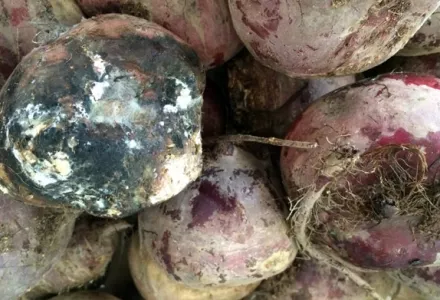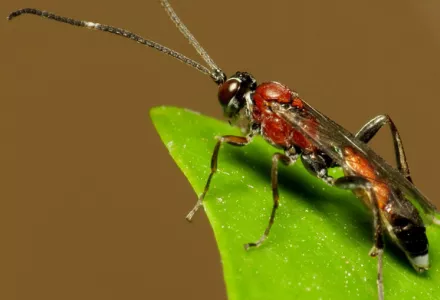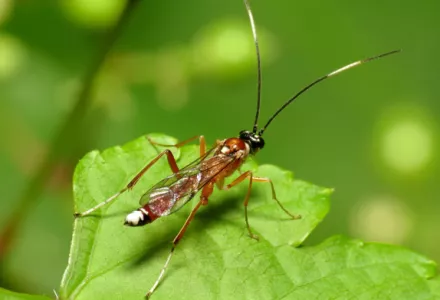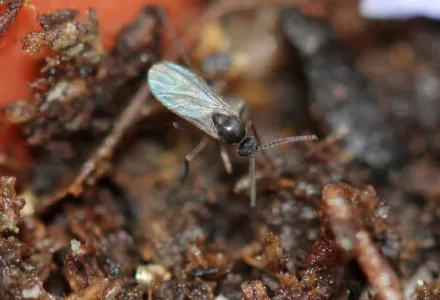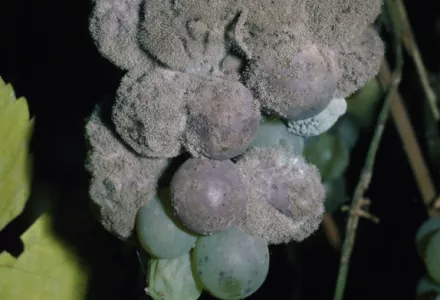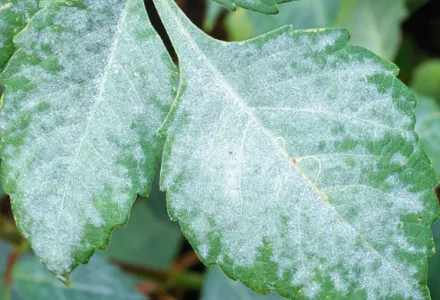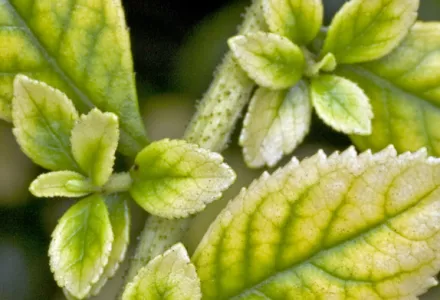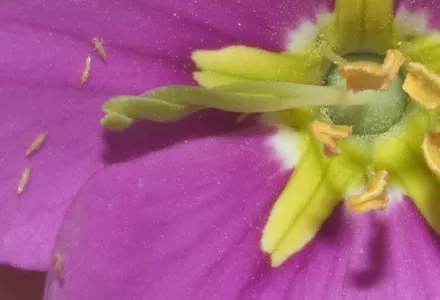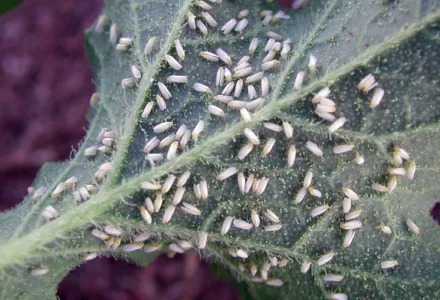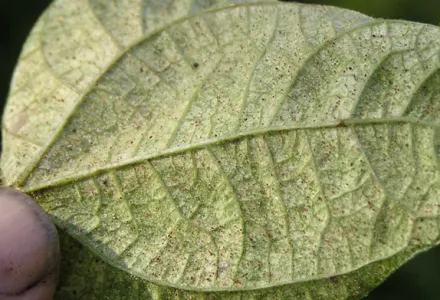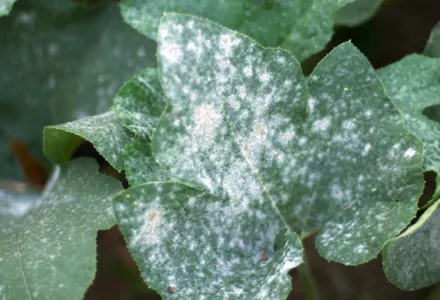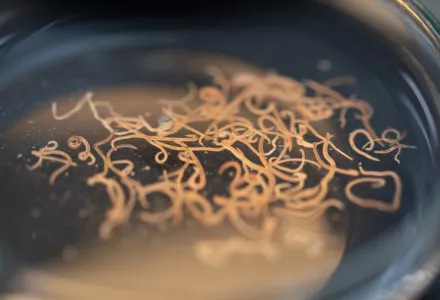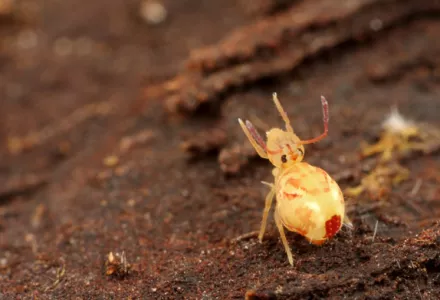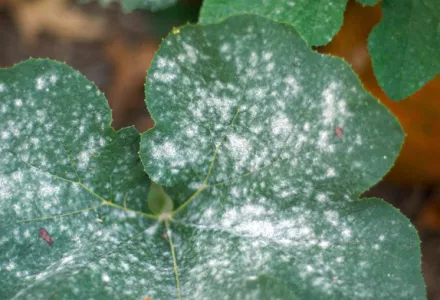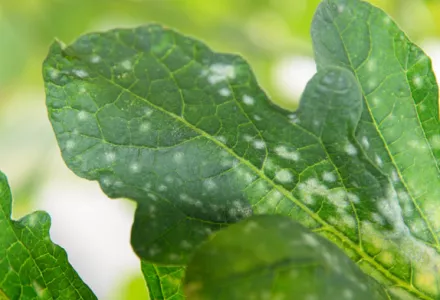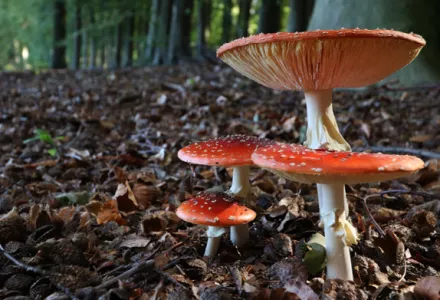We have all seen it at some point: tomatoes or strawberries that have been sitting in the fridge for a bit too long and are completely covered with a layer of furry layer of grey mould. Not very appealing, that’s for sure!
Frequently, the mould that we are seeing is Botrytis cinerea, also known as grey mould or grey rot. This parasitic mould sends shivers down the spine of many growers. It can occur in flowers and fruits, particularly at the end of the flowering or fruit-ripening period and mainly in outdoor crops that are exposed to rain and humidity. Botrytis attacks weak plants or dying flowers. In fact, in nature it helps the recycling process of plants by breaking them down and making the nutrients available in the soil. So the fungus actually plays a vital role in the natural growth cycle. But when it strikes your crops, it’s a pest!
The organism causes significant loss of crops every year around the world and as such it represents a threat to our food supply. The mould is particularly likely to attack in the autumn, but it can also strike during wet summers. This is because Botrytis thrives under conditions of high air humidity. This is a very good reason for not keeping your fruit and vegetables in the fridge, because after all, your fridge is very humid!
Grapes
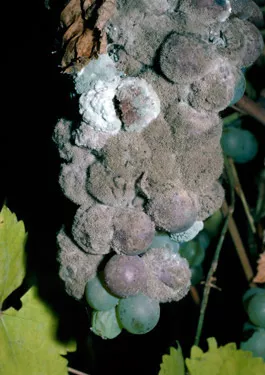
The name ‘grey mould’ refers to a phase in the development of the fungus, during which it acquires the appearance of a grey fuzz. This fuzz contains the spores (reproductive cells) of the fungus. The typical fuzz is rarely observed, since it requires specific conditions to produce spores.
The species name Botrytis cinerea is derived from the Greek word ‘botrys’, which means ‘cluster of grapes’ and the Latin word ‘cinerea’, referring to the ashy colour of the mould. Viewed under a microscope, using a little imagination, the structures carrying the fungal spores do indeed look like bunches of grapes.
Botrytis cinerea is a necrotrophic fungus, which means that it kills its host to obtain all the nutrients it needs. The tissue on which it develops becomes dark and sometimes soft, due to the death of the host cells. In time, a layer of furry grey mould will form on these dark spots. The mould grows on dying and dead plant material but can also affect living cells. Usually, a Botrytis infection only becomes visible after two or three weeks. If the infection can be seen with the naked eye, the mould will already have penetrated the plant. At that point, there is little point in using a fungicide.
The fungus can infect over 200 plant species, but it causes the most damage and yield loss in strawberries and grapes. It is also saprophytic: it can feed on non-living organic debris. This means that it can also affect crops that have already been harvested!
Botrytis prefers flowers and fruits, but it can also grow on stalks, leaves and seeds. Infected seeds carry the fungus, which only starts to grow and develop when conditions are suitable. This usually happens when the seed is germinating. When this happens, the seedling will die shortly after germination or the seed will not germinate at all. This effect is known as ‘damping off’. It can also be caused by other germs.
The fungus infection in flowers is not visible initially. Chlorosis – tissue that looks brown and wet near the infection site – is one of the first symptoms that indicate a possible Botrytis attack. A lighter coloured spot on the flowers with a dark brown ring around it can also indicate a mould infection.
Life cycle
Early development of grey mould usually starts in infected plant debris from previous crops, which have been left in the field. The mycelium present in the debris begins to develop when temperatures increase, for example in early spring. In bright light, the mycelium begins to produce structures called conidiophores. At the end of these conidiophores, spores called conidias are formed which are then transported through the air and can come into contact with the leaves or stem of crops.
There, they germinate and begin to attack. A sudden drop in humidity and a temperature increase is necessary for the spores to be released from the conidiophores. This is usually the case during early morning. Raindrops splashing on an infected plant can also contribute to the dissemination of the spores. Insects are another means by which the conidia can be carried from on infected plant to another, and they are a major source of infection. Other sources that can cause infection are nearby crops and or gardens which are infected.

For the spore to germinate, sufficient moisture and nutrients (sugars and organic materials) must be available on or around the plant. Moisture can come from condensation on the plants, which is caused by air humidity levels of over 95%, or from any plant sap which is escaping as a result of damage to the outer surface of the plant.
When a spore germinates, germ tubes emerge from the spore. At the end of these tubes there is a widening, called an appressoria, which forms an infection peg that enters the plant tissue. The peg is not able to penetrate the plant tissue instantly. It first needs to secrete certain enzymes, which help to eliminate the plant’s first cellular barrier (the cuticle - the waxy outermost layer of the plant).
The cuticle of healthy tissue is often very tough, so the fungus is more likely to penetrate damaged, weak or senescent (ageing) tissue. Infection can also start through stomata and wounds. That is why Botrytis often appears after an attack by caterpillars, because the fungus will take advantage of the damage caused by the insect bites to enter the plant. Any damage that has been caused by the grower when making cuttings, harvesting fruit or pinching out growth tips, can also give Botrytis an opportunity to enter the plant.
Once it has penetrated through the cuticle, the fungus can spread to the next layer of cells, which are rich in pectin. To do this, the fungus secretes more enzymes, different from those used to remove the cuticle. Such enzymes are pectinases, including endopolygalacturonase. The optimum temperature for fungal growth is around 24°C, but it can withstand temperatures as low as 0°C. So actually, temperature plays a less important role than relative air humidity. As long as the relative air humidity is high, Botrytis can attack in all temperatures.
Botrytis also secretes proteins and phytotoxic substances that trigger the collapse and death of cells adjacent to the host. One of these substances is called botrydial.
The plant’s immune system also affects the speed at which infection occurs. The plant’s defences are sometimes lower in the autumn, which means that the half-dormant Botrytis can severely strike the plant. This is why some growers have problems with Botrytis at the end of the growing season. But higher levels of air humidity often play an equally important role in this phenomenon.
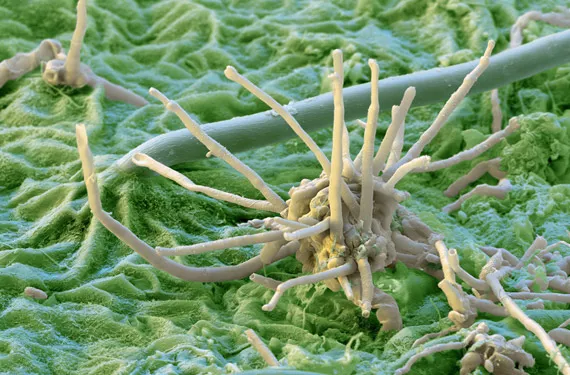
Control methods
During cultivation
It is very important to get rid of any parts of the plant that are infected with Botrytis. The infected parts should be removed and immediately put in a plastic bag. If you need to remove the whole plant, you should follow these steps:
- Put a bag over the plant without touching it
- Take the plant out of the ground, including the roots
- Remove the bag and the plant from the growing area
- Before you go back to the growing area, wash your hands and change your clothes
You must never allow the infected plant or parts of the plant to come into contact with other plants, because even the slightest contact will send clouds of grey spores into the air. These spores will then land on healthy plants which may then get infected.
As for the crop, it is important that the plants have enough space and that the leaves do not touch each other. Good ventilation is essential in order to maintain slightly lower humidity around the leaves and flowers. For outdoor crops, it is advisable to cover the plants with a plastic shelter like a poly-tunnel when rain is expected. This prevents the plant from getting wet.
It is also important to be vigilant against pests such as caterpillars which can cause damage to the cuticle, which allows B. cinerea can exploit to enter the plant more easily. It’s easier for the fungus to infect plants that have been damaged by chewing pests. Other insects like thrips can carry and spread Botrytis spores.
Biological control
Several micro-organisms have proven to be successful in controlling B. cinerea in a wide variety of crops. Clonostachys rosea (= Gliocladium roseum) is a fungus that is used to combat and prevent Botrytis attacks because of its ability to suppress the production of spores. C. rosea is not the only organism that fights B. cinerea. Some nematode species have also been used to control grey mould effectively.
Some strains of Trichoderma harzianum have been shown to have an antagonistic effect of the development of B. cinerea in some crops. And some bacteria of the genus Bacillus have been identified which are capable of producing substances that inhibit the growth of B. cinerea, which are useful when applied to infected flowers and fruits and the soil to prevent damping off. However, the effectiveness of these organisms depends on various factors such as environmental conditions and the developmental stage of the crop. For crops like strawberries and blueberries, bees have also been used successfully to improve the dispersion and efficacy of these antagonistic bacteria. If a certain amount of beneficial micro-organisms are placed in the beehive, they will be distributed around the crop by the bees.
Fungicides based on natural extracts
Many plant extract preparations are marketed primarily to prevent the attack and development of B. cinerea. Good results have been achieved with extracts of thyme, citrus seed, oregano, mint, garlic and pepper, to name but a few. The components of these extracts are diverse, but many act by inhibiting the germination of conidia or preventing the development of the mycelium.
Biotechnological improvements
Scientists have succeeded in developing transgenic plants in the lab which are not affected by B. cinerea by introducing a resistance gene. This resistance gene encodes a type of protein called polygalacturonase inhibitory proteins. As mentioned above, Botrytis produces enzymes that allow the fungus to infect host cells and some of these enzymes are endopolygalaturonases. Inhibiting this protein means that plants are more resistant to fungal attack.
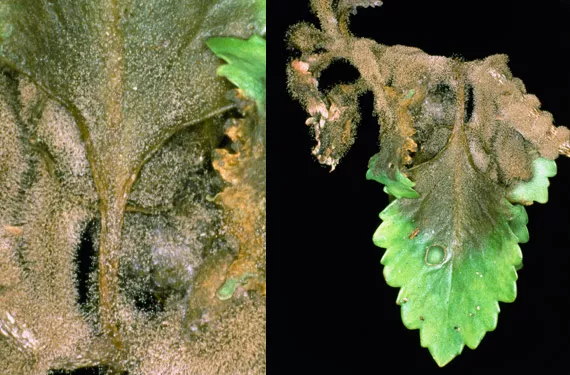
Noble rot
Botrytis Cinerea is a very common mould, which spreads very easily, both in the vegetable drawer of your fridge and in live crops in the field. Although it is possible to combat this type of mould, it is difficult to get it under control. That’s why it has been such a difficult problem worldwide!
However, Botrytis is not always harmful. For example, when ripe grapes are infected in viticulture (grape- growing), the skin becomes more porous and more water can evaporate from the fruit. That benefits the sugar content and produces wine with a better bouquet. This is also known as ‘noble rot’. To produce some of the best ‘Botrytis wines’, the grapes are literally handpicked one by one, so that only those grapes that have been infected by the parasitic mould are selected. In some cases, then, Botrytis can be a blessing for horticulturists. And in nature, moulds are certainly a blessing. We have Botrytis to thank for the fact that all the leaves which fall from the trees in the autumn get tidied up so efficiently. And that means that the circle of life can begin anew.


